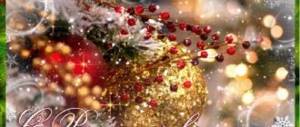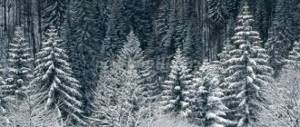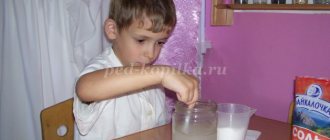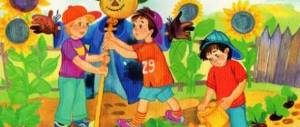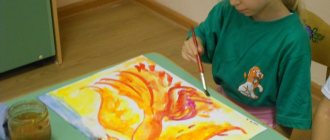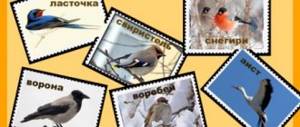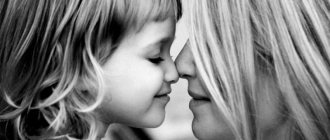Introduction
In the nature of our region, all four seasons are clearly expressed.
Moreover, the cold period lasts more than six months and wintering birds adorn the frosty, snow-covered landscapes. They attract people's attention with their bright and black and white plumage, varied singing, and lively behavior. Hunger and cold drive forest birds and birds that avoid people to fly to villages and cities where they can find food. And only in winter can children see: an owl, a crow, a woodpecker, birds of prey, in a city park and square. Meeting flocks of waxwings and bullfinches evokes admiration and aesthetic pleasure in children, a desire to admire the bright plumage and listen to the gentle sounds of their singing.
With the help of adults, children will gain knowledge about wintering birds from:
- natural history literature;
- games;
- classes;
- observations;
- excursions.
On frosty days, feathered friends huddle close to human habitation and visit feeders built by humans, i.e. are in close proximity to people. This makes it possible to get “closely acquainted” with wintering birds and observe them.
Children will learn that it is more difficult for birds to get food in winter because... no insects or plant foods. Sometimes natural food becomes practically unavailable and many birds cannot survive the winter and die. Therefore, bird friends should stock up on food for the winter: berries, weed seeds, grain; arrange feeders, monitor them and replenish them regularly with food.
Many migratory birds left our region in search of warmth and affordable food, and wintering birds remained with us to share the hardships of winter and delight us with their singing and cheerful antics.
In order for children from an early age to: take care of the surrounding nature, take care of “our little brothers,” it is necessary to give children knowledge about wintering birds, teach them to observe, compare, analyze, care for them, feed them, take care of them, be surprised and admire them.
Relevance of the topic:
The topic of introducing preschoolers to wintering birds is very relevant at the present time. Children living in the city are very far from nature. They live nearby and don’t notice: a crow paces, sparrows chirp, pigeons peck at weed seeds. Not only children, but also many adults cannot distinguish a goldfinch from a siskin.
It would seem that they are familiar: crows, jackdaws, and pigeons cannot surprise children with anything unusual, but this is the ecological task: to find something interesting and entertaining in ordinary things.
People's consumerist attitude towards nature has led to disastrous results in the environmental situation: the extermination of many species of birds, their death in severe frosts from lack of food, poisoning by chemical waste, etc.
The task of parents and educators from an early age is to instill in children a caring attitude towards birds and show them their role in the ecosystem. It is possible to solve this problem if: together with the children, make feeders, store birdseed for the winter, feed the birds in the winter.
Goal: To develop the cognitive activity of children by introducing them to natural objects of their native land - wintering birds.
Tasks:
- To form children’s knowledge about wintering birds of their native land.
- Show the variety of species of wintering birds, their structure, size, plumage color, habits.
- Reveal the dependence of the external structure of wintering birds and their habits on their adaptability to life in the cold season.
- Show how wintering birds obtain food during the cold season. Learn to classify them according to their feeding method: granivores, insectivores, herbivores, carnivores and omnivores.
- Help to understand the habitats of wintering birds: in the city, outside the city, in the forest.
- Involve children in environmental activities: making feeders, collecting food, winter feeding of birds.
- Foster a love of nature and respect for all living things.
Project type : Practice-oriented.
Project participants : Children, teachers, parents.
Methodological support:
- Anashkina E. N. 300 questions and answers about birds. Development Academy. Yaroslavl. 1998
- Bianki V.V. Lesnaya newspaper . ABC is a classic. Saint Petersburg. 2005
- Bianki V.V. Stories about wintering birds. Series: School library. Samovar.2003
- Bolshakova M.D., Dubrovskaya I.G., Ermakova E.S., Ershova L.V., Lebedeva S.A., Smirnova E.A., Pravdov M.A. “Rodnichok” Regional program for preschool education - Ivanovo. 1997
- Brem A. Life of animals: mammals, birds... Eksmo. M: 2002
- Veretennikova S.A. Introducing preschoolers to nature - M: Enlightenment. 1980
- Veretennikova S.A. Methodical guide to the album: Birds. Education. 1974
- Everything about everything. Birds . Astrel.M:.2002.
- Childhood . Program for the development and education of children in kindergarten. Ed. Babaeva T.I., Mikhailova Z.A., Gurovich L.M. Saint Petersburg. 2000
- Dmitriev Yu. Forest mysteries . Dragonfly – press 2005
- How to introduce preschoolers to nature . Ed. Samorukova. P.G.-M: Enlightenment. 1983
- Observations and work of children in nature . Ed. Mazurina A.F. M: Enlightenment. 1976
- Nikolaeva S.N. Methods of environmental education of children in kindergarten . M. Education. 2001.
- Potapova L. M. Children about nature. Ecology in games . Academy Holding. Yaroslavl. 2000
- Skrebitsky G. A. Stories about nature . Children's literature. M:. 1988
- Sladkov N.I. Ecological stories about birds . The seeker's world. 2003
- Sokolov - Mikitov I. S. Russian forest. Eksmo. M:. 2013
- Stepanova N. Monthsword . Ripol. M:. 2008
- Tarabarina T.I., Sokolova E.I. Both study and play: natural history . Development Academy. Yaroslavl. 1998
- Tolstoy L.N. Fables and stories . Children's literature. M:. 1988
- Ushinsky K. D. Stories and tales about animals and birds . Children's literature. M:. 1992
- Chaplina V. Birds under our window. Birds in our forest. Baby. M:. 1984
- School guide. Birds . Series: Discover the world. BKK.2008
- Shorygina T. A. Birds. What are they? M: 2000
- Encyclopedia of Children's Folklore . White City. M: 2008
- Encyclopedia of Russian omens . Eksmo – Press. M:. 2000
- Encyclopedia I explore the world “Amazing animals and birds” - M: Astrel. 2001
Expected results:
- Children will be able to recognize and name wintering birds in pictures and in wildlife.
- They will learn a lot of interesting things about wintering birds, learn poems and songs, and be able to guess riddles.
- They will learn to observe the habits of birds and notice interesting things in the world of wintering birds.
- They understand the importance of caring for birds, the need to make feeders, stock up on birdseed and winter feeding of our feathered friends.
Project implementation period : from 02/24/2019. until 28.02. 2020
Stages of work:
PROJECT “Birds are our friends”
Approximate basic general education program “From birth to school”, Education and training program in kindergarten / Ed. N.E. Veraksy, T.S. Komarova, M.A. Vasilyeva.
Relevance of the project:
*
“Love for the Motherland begins with love for nature.” The fact is that it is possible to develop love for the Motherland, for the native land, for the native nature, for people only at a young age. Then changing the worldview, changing a person’s ideas and views on the environment is extremely difficult. That is why it is important to promptly develop the ecological consciousness of a small personality. Considering that the state puts the issue of environmental protection as one of its priorities. Environmental literacy, a careful and loving attitude towards nature have become an analogue of human survival on our planet. Thus, environmental education is a relevant and main task. In modern conditions, the problem of environmental education of preschool children becomes particularly acute and relevant. Environmental education of preschool children is important, since during this period the child goes through the most intense spiritual and intellectual path of development. The intrinsic value of preschool childhood is obvious: the first seven years in a child’s life are a period of rapid growth and intensive development, a period of continuous improvement of physical and mental capabilities, the beginning of personality formation. During this period, the fundamental principles of ecological thinking, consciousness, and ecological culture are formed. Environmental education in the preschool education system is of great importance as the initial stage of the system of continuous and universal environmental education. The effectiveness of activities in the preschool education system provides a good foundation for the subsequent stages of the environmental education system. Most modern children rarely communicate with nature. Environmental education begins with familiarization with the objects of the immediate environment that the child encounters every day. In any city or town you can find natural objects interesting to observe: trees, grass, insects, birds. Practical and research activities in natural conditions play a huge role in the environmental education of preschool children. They can be studied in the process of design and research activities. If a child at least once in preschool age participated in the exploration of surrounding objects, then success in further studies at school is guaranteed. Indeed, in the process of childhood research, the child acquires specific cognitive skills: he learns to observe, reason, plan work, learns to predict the result, experiment, compare, analyze, draw conclusions and generalizations, in a word, develops cognitive abilities. Therefore, children are given an additional opportunity to get involved in research work as the leading way of understanding the world around them. The project solves the problem of cognitive and speech development of children through environmental education.
Project progress
Statement of the problem, entering into a game situation.
Educator: Children, today a bird, a rock dove, knocked on our window with its beak. I really love birds and study their language, so I understood what the dove said.
He asked to eat something, because in the cold winter it is very difficult to find food. I poured him a handful of seeds and the dove cooed happily. He told me that there were still a lot of birds outside that were very cold and hungry.
Are you ready to feed them? But we must remember that each bird prefers its own food.
Do you think we can figure out: how to distinguish one bird from another, where they live, what they eat, how and where to feed them?
Discussion of the problem of accepting a task.
Educator: What should you do to learn more about wintering birds?
Children: (answer options) Read books, look at: albums, postcards and magazines, draw wintering birds, make crafts, collect collections of pictures and drawings. Learn new things in classes, on hikes and excursions.
Joint search and research activities.
From 24.02.2020 to 28.04.2020.
Topic: “Wintering birds”
Quote on topic:
“This is how birds and people live, side by side, often not paying attention to each other, sometimes quarreling, sometimes rejoicing in each other, like members of one big family. Which one of them needs more - man for birds or birds for man? But will man survive if there are no birds left on Earth? E.N. Golovanov.
Motto: “We need to help feathered friends: feed, study, protect.”
Monday: The concept of “wintering birds”
“In hot countries it’s warmer, but in the Motherland, even in cold weather”
Classes
Speech development: Retelling the story of L.N. Tolstoy: “Smart Jackdaw.”
Educational activities in special moments
Didactic games:
- "Wintering and migratory birds."
- “Whose tail?” - body parts.
- “What will the bird say about itself?” - characteristic features of birds, unlike others.
Board games:
- “Circle the wintering birds.”
- “Collect a bird” - body parts of birds.
Fun game: “The birds have arrived” - separate the names of birds from other objects.
Articulation gymnastics: “Let’s warm the bird with our breath.”
Physical activity:
- Outdoor game: “Bird flocks”.
- Outdoor game: “Kite and hen.”
Patience and work will grind everything down: Making bird feeders from waste material.
Conversation: “How do our feathered friends live in winter?”
Let's dance together: "Dance of the Tits."
Fun chest: Proverbs and sayings about wintering birds.
Reading room: Reading stories from the collection “Sparrow in a Hat”, “Conversations of Animals and Birds”. Nikolai Sladkov.
Musical moment: Singing the song “Everybody Needs Friends” - about a sparrow.
Art gallery: Display of a series of paintings by John Sloan: “Birds and Flowers.”
Tili-bom - the album opens: Showing the album: “Wintering Next to Us.”
Paints, scissors, paper: Manual labor: “Jolly Birds” is waste material.
World of Coloring Books: Coloring the Wintering Birds coloring book.
Tuesday: Variety of wintering bird species
“A bird is recognized by its plumage and flight”
Classes
Fabric applique: “Who flew to the feeder?”
Mathematical development: “Funny bird counting”
Educational activities in special moments
Didactic games:
- "The fourth wheel."
- “Comparisons” - similarities and differences between birds.
- “Name a feature of wintering birds” - appearance and habits.
Board games:
- Lego "Different Birds".
- “Cut pictures of birds” - assemble a whole picture from parts.
Physical activity:
- "Birdcatcher".
- "Partridges and hunters."
Creative game: “Bird Dance School.”
Picture gallery: Display of a series of paintings by E. A. Tkacheva “Children and Birds”.
Round dance game: “Black Raven on an Oak Tree.”
Reading room: Reading a poem by Julian Tuwim: “Bird Radio.”
Physical education lesson: “Sparrow aerobics.”
Patience and work will grind everything down: Sorting and replenishing food supplies for wintering birds.
Musical minute: Individual work on singing “Chizhik - fawn.”
Tili-bom opens the album: Showing an album with figurines of wintering birds: “Porcelain Birds”.
Paints, scissors, paper: Origami crafts “Jackdaws and crows, are you all healthy?”
Dramatization game: Based on the scene “Woodpecker – Builder”.
Excursion to the winter park: Observation of wintering birds in their natural habitat.
Psycho-gymnastics: “Crows and sparrows” - imitate the movements of birds.
Conversation: “Why do birds stay with us for the winter?”
Wednesday. Classification of wintering birds by habitat
“Every bird is the mistress of its nest”
Classes
OBJ: “When are birds dangerous?”
Drawing: “Portraits of wintering birds.”
Educational activities in special moments
Didactic games:
- "Who lives where?".
- “Every bird in its place” - habitat.
- “There are some birds you don’t see at the feeder in winter.”
Board games:
- "Find the bird's shadow."
- "Bird Stories".
Physical activity:
- "Owl."
- "Sparrows and cars."
Game dramatization: Based on the poem: “Bird’s Dining Room.”
Sports attractions:
- “Hang the berries on the trees for the birds.”
- “Feed the crossbill chicks with cone seeds.”
Finger gymnastics: “Feeder”.
Patience and work will grind everything down: Adding bird food to feeders.
Moral conversation: “What can be done so that wintering birds do not regret remaining to spend the winter sleeping?”
Talkers: Compiling a story - reasoning “Come up with a name for the wintering bird, taking into account its external signs.”
Reading room: Reading stories about wintering birds from the collection “Russian Forest” by Ivan Sokolov-Mikitov.
Fun chest:
- Puppet theater: "Silly eagle chick."
- Riddles about wintering birds."
Musical minute: Listening to songs: “Crow - Karkarulya”, “You, titmouse, where have you been?”
Art gallery: Display of a series of paintings by Marjoline Bastin: “Portraits of Birds.”
Tili-bom opens the album: “How we feed the birds in winter.”
Paints, scissors, paper: Application: “Bullfinches and titmice.”
Fun with toys: “A set of soft toys in the shape of wintering birds.”
Thursday: Classification of wintering birds by feeding method
“There will be food in the feeder, and the birds will flock in”
Classes
Fiction: Reading the story by Maxim Gorky: “Sparrow.”
Local history: “Birds from the Red Book that live in our region.”
Educational activities in special moments
Didactic games:
- "Who eats what."
- “Find and feed wintering birds.”
- "Bird menu".
Board games:
- Domino "Birds".
- Puzzles "Birds".
The game is fun: “Who gives what voice?” - choose the role of a bird and imitate its voice.
Finger gymnastics: “Bullfinches”.
Physical activity:
- "Crossbills and Chicks."
- "Crows".
Patience and work will grind everything down: Cleaning and tidying up bird feeders.
Reading room: Vitaly Bianchi: “Sinichkin’s calendar.”
Moral conversation: “What will happen if you don’t care and don’t feed wintering birds?”
Fun chest:
- "Funny poems about wintering birds."
- Display of folk fabric toys “Birds”.
Musical minute: Singing a song - jokes: “Filka’s name day.”
Picture gallery: Display of paintings: T. N. Yablonskaya “Bullfinches”, I. V. Reshetnikov “Titmouse’s Thoughts”.
Tili-bom opens the album: Showing illustrations from the album “Air Conquerors”.
Artist competition: “Draw the most unusual winter bird.”
Friday: Winter feeding and bird protection
“Birds are our friends - we must not offend them!”
Classes
Natural World: Wintering Birds is a comprehensive activity.
Educational activities in special moments
Didactic games:
- “What benefits do birds bring?”
- “What did the artist mix up?”
- “Who needs whom” - logical chains of the ecosystem.
Board games:
- Labyrinth "Wintering Birds".
- "Bird Lotto"
Conversation: “What is worse for birds in winter: hunger or cold?”
Creative game: “Bird fashion show.”
Fun with toys: “The Wind-Up Bird.”
Let's dance together: "Dance of the White Doves."
Psycho-gymnastics: “Birds are scared of cats”
Physical activity:
- "Woodpecker".
- "Hawk Winter Hunting"
Patience and work will grind everything down: Repair and replacement of bird feeders.
Sayers: “Write a description of the bird you have in mind so that we can guess what it is called.”
Reading room: Reading a story about birds by Georgy Skrebitsky: “Hello, red sun”
Musical minute: Singing a song - game: “Two Grouse.”
Paints, scissors, paper:
- Design from natural material “Little bird - wren”.
- Creation of a homemade book “Wintering Birds”.
World of Coloring Books: Drawing and coloring wintering birds using stencils.
Picture gallery: Display of paintings by artists: Anikeeva, Balabushkina, Timma: “Capercaillie and black grouse.”
Round dance game: “In a dark forest, a thief is a sparrow.”
Crossword: Guessing the crossword puzzle “Wintering birds” using pictures.
Tili-bom opens the album: Showing a set of postcards “Birds of Prey”.
Interaction with parents: Report at a parent meeting on the topic: “Making feeders for wintering birds. Master Class".
Questionnaire: “What do you know about wintering birds?”
Consultations for parents:
- “Folk signs and bird calendar of wintering birds.”
- "Feed the birds in winter."
- “Children and pigeons. Safety in nature."
Photo exhibition:
- "Excursion to the winter park."
- "Bird Masquerade"
- Photo report from the Bird Festival.
- “Feeding birds in a feeder on the site.”
Exhibition of family crafts: “Feathered Friends.”
Exhibition of children's works:
- Origami: “Jackdaws and crows, are you all healthy?”
- Construction from waste material: “Funny Birds”.
- Drawing: “Portraits of wintering birds.”
- Manual labor: “What are the sparrows singing about?”
- Application: “Bullfinches and titmouses.”
- Fabric applique: “Who flew to the feeder?”
Preparation of costumes, decorations and attributes for the “Bird Festival”.
Exhibition:
- books;
- magazines;
- sets of postcards;
- albums;
- paintings about wintering birds in book and nature corners.
Project in the preparatory group “Birds are our friends”
Municipal educational institution - secondary school No. 6 in the city of Marx, structural unit of the municipal preschool educational institution - kindergarten No. 16 in the city of Marx, Saratov region
“Birds are our friends” (project in preparatory group No. 7)
Prepared by: teachers of the structural unit of MOU d/s No. 16, group No. 7 Romadina I.V., Zueva T.V.
The purpose of the project : to develop children's ideas about the peculiarities of life of wintering and migratory birds, to develop cognitive interest in their native nature, to cultivate a careful and caring attitude towards birds; development in preschool children of a sustainable interest in Russian folk culture in the process of becoming familiar with folk customs and traditions.
Project objectives: - expand and consolidate ideas about the appearance and body parts of birds; - expand and consolidate ideas about the life of wintering and migratory birds in natural conditions and adaptation to their habitat: what they eat, how they escape from enemies, how they adapt to life in winter and spring after migration; — introduce children to the concepts: flying in a “wedge”, “chain”, “flock”; — develop the ability to establish cause-and-effect relationships, learn to draw conclusions; - cultivate interest in living nature, develop curiosity; - intensify joint activities of parents and children.
Project type: group , creative research, short-term.
The date of the:21.03.2016 — 25.03.2016
Project participants : preparatory group children (6-8 years old), teachers, music director, parents
Relevance Children need to be given basic knowledge about nature from an early age and to maintain an interest in learning about the world around them. To evoke aesthetic experiences, the ability to empathize with living beings, i.e. to realize that we do not have the right to destroy what nature has created, we are people, part of nature; by destroying nature, we destroy ourselves. In a word, we instill in children’s minds a sense of the world as a home, showing how the inhabitants of the house, planet Earth, get along and influence each other. A preliminary diagnosis showed that children have insufficient knowledge about the life of birds, what benefits birds bring, what is harmful and what is useful for birds. Therefore, it was decided to deepen children’s knowledge about the life of birds through educational, joint productive activities, connection with Russian folk customs and rituals, and involving parents in the work.
Expected result: Children will develop knowledge about the life of wintering and migratory birds. Children will develop a strong interest in wildlife and the culture of the Russian people. Children will be able to apply the acquired knowledge in productive activities. Creation of the wall newspaper “Feathered Friends”
Product of project activity: entertainment “Birds are our friends”
Project implementation stages.
1. Organizational stage. Studying the level of knowledge on the topic. Determine children’s current knowledge about migratory birds. Selection of methodological and fiction literature. Production and selection of teaching aids on the topic. Development and accumulation of methodological materials and recommendations on the problem. Interaction with parents: introduce the project. invite to cooperation...
Title: Project in the preparatory group “Birds are our friends” Nomination: Kindergarten, Methodological developments, Project activities, Preparatory group Author: Zueva Tatyana Vladimirovna Position: teacher Place of work: Municipal educational institution secondary school No. 6 of Marx - structural unit of MDOU d/s No. 16 Location: Saratov region, Marks
Card file of wintering birds games
Didactic games
1. “Wintering birds.” Recognize wintering birds in pictures, name the characteristic features of their appearance and habits.
2. “Wintering and migratory.” Classify birds according to the criteria “wintering – migratory”.
2. “ Whose tail?” Recognize the characteristic features of birds by body parts.
3. “Guess by the description . Name the wintering bird based on its description.
4. “What will the bird say about itself.” Characteristics of birds, their differences from others.
5 “The fourth odd one” Distinguish wintering birds from migratory birds. Sparrow, rook , magpie, tit.
Pigeon, woodpecker, bullfinch, swallow.
6. “What birds don’t you see at the feeder in winter?”
Find, recognize and name wintering birds, distinguish them from migratory birds.
7. “Name a feature of wintering birds.” Learn to identify the features of the appearance of birds and their habits.
8. “What benefits do birds bring?” Analyze knowledge and name the benefits brought to nature.
9. “Who is a bird here and who is not.” Signs of birds.
10. “Who eats what?” Methods of feeding wintering birds, and their classification according to feeding method.
11. “Find and feed wintering birds” Recognize wintering birds in pictures and know what they eat in the winter season.
12. “Who lives where?” Help to understand the habitats of birds in the winter season.
13. “Bird menu.” Help children remember what food to put in bird feeders in winter.
14. “Comparisons” . Teach children to find similarities and differences between two birds.
15. “What the artist mixed up” Find a discrepancy in the image of wintering birds and pictures of nature.
16. “Find similarities and differences.” Learn to find elements of similarity and difference in two similar birds.
17. “Rank the birds by size.” Recognize wintering birds in pictures, know their sizes and be able to arrange them by size: ascending and descending.
18. “Find the odd one out.” Be able to find an extra image of birds among the four figures of wintering birds: domestic and migratory.
19. “Every bird in its place.” Classify wintering birds according to their habitat and feeding characteristics.
20. “Who needs who?” Create logical chains of habitat for wintering birds in urban and forest ecosystems.
Board games
1. “Bird lotto”.
2. “Circle the wintering birds.”
3. “Find the bird’s shadow.”
4. "Domino" (birds).
5. Collect “cut pictures” from parts of birds.
6. Labyrinth “Wintering Birds”.
7. “Find your soulmate.”
8. “Collect the bird.”
9. Lego: “Different Birds.”
Speech games
1. “Count the birds.” Strengthen the ability to coordinate quantitative adjectives with nouns.
One dove, two doves, three doves, four doves, five doves, etc.
2. “Big - small.” Strengthen children's ability to form nouns and adjectives with diminutive meanings.
Sharp beak - sharp beak. Thin paws - thin paws.
3. “One is many.” Be able to form the plural forms of nouns.
One crow - many crows, One sparrow - many sparrows, etc.
4. “Who gives their voice?” Learn to form new words using onomatopoeia.
5. “Call me kindly.” Form new words - diminutives, using suffixes.
The adult says: “Dove”, the child answers: “Dove”.
6. “Say the opposite.” Teach children to choose words - antonyms.
7. “Pick up a sign.” Agreement of nouns with adjectives.
Tit: fast, timid, agile, yellow-breasted...
8. “Let’s sing like the birds.” Teach onomatopoeia.
9. “Come up with your own name for the bird.” Taking into account the external signs and habits of the wintering bird, find a new name for it.
Fun games
1. “The birds have arrived” Learn to identify the names of birds in a poetic text by ear and highlight the names of other objects.
2. “Who gives what voice?” Learn to distinguish the voices of wintering birds, and imitate their voices on behalf of these birds.
I am a crow: kar-kar-kar. I can croak. I'm a magpie: page-page-page. I can chirp.
3. “Draw the bird you have in mind with your hands.” Give a description of a wintering bird using various movements, without words.
4. “Tap dance.” Tap dancing is chosen. The rest of the children are trees. The tap dancer asks where the tap dancer was? And runs up to the birch tree. She replies that she was not on the birch tree, the tap dancer flew to the spruce. Now the spruce answers. Those who missed give away a forfeit. And then the forfeits grant the tap dancers’ wishes.
5. “Sparrows in a puddle.” Children sit in the center of a large outlined circle, chirping and splashing in a puddle. At the signal “Shoo!” fly out of the puddle and fly around the site and then return to the puddle.
6. “Guess who’s coming?” Children imitate the gait: either a sparrow or a crow. They either jump on two legs, or walk importantly. The teacher accompanies them on the tambourine: sometimes in small fractions, sometimes in a measured rhythm.
Finger gymnastics
1. «Feeder».
How many birds are at our feeder (they rhythmically clench and unclench their fists). Has it arrived? We'll tell you. Two tits, a sparrow, a woodpecker with motley wings. There were enough grains for everyone.
2. «Feeder at home»
The birds flew up to the house (Two thumbs clasp each other, the rest flap like a bird with its wings) The birds sat on the feeder (Hold one palm parallel to the chest) They began to peck the grains (With the other hand, the thumb and index fingers), And nodded their heads (We connect the fingers together, depicting the head of a bird and bending the hands).
3. "Bullfinches"
Bullfinches. Bullfinches. (Children stand facing in a circle, clap their hands at their sides.) One two Three; one two Three. (They bend three fingers on both hands, starting with the big ones.) They arrived, sat, (They bend the remaining two fingers on each hand.) They made a noise, flew away. (They run in a circle, flapping their arms like wings.) They flew into the sky. (They stop and wave with crossed palms.) What miracles! (They throw up their hands in surprise.)
4. “Ten birds are a flock.”
5. "Bullfinches".
Here on the branches, look, (4 claps of hands on each side) Bullfinches in red T-shirts (4 head tilts per line) Fluffed feathers, basking in the sun. (frequent shaking of hands) They turn their heads, (2 turns of the head for each line) They want to fly away. Shoo, shoo! Let's fly away! (children run away, flapping their arms like wings) Behind the blizzard! Behind the blizzard!
6. Snowflake"
A bullfinch sat on a branch - the children waved their hands F-f, f-f, exhaled briefly actively. The rain splashed - it got wet; they hit the palm of the other with their index finger F-f, f-f. They exhale briefly, softly Breeze, blow lightly, shake their raised arms above their head Dry the bullfinch for us! F-f-f-f-... exhale for a long time.
Fizkul,
“The jackdaw jumps, dances deftly, the jackdaw flaps its wings and takes off without looking back. This is Galka’s exercise.”
